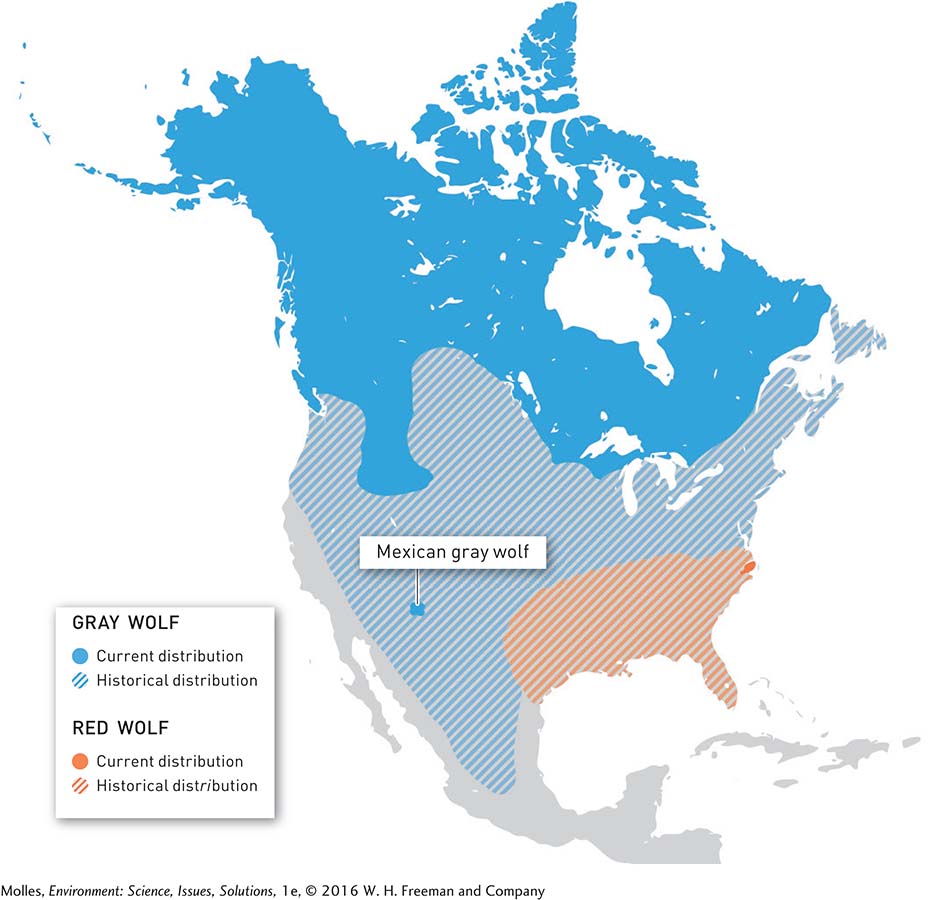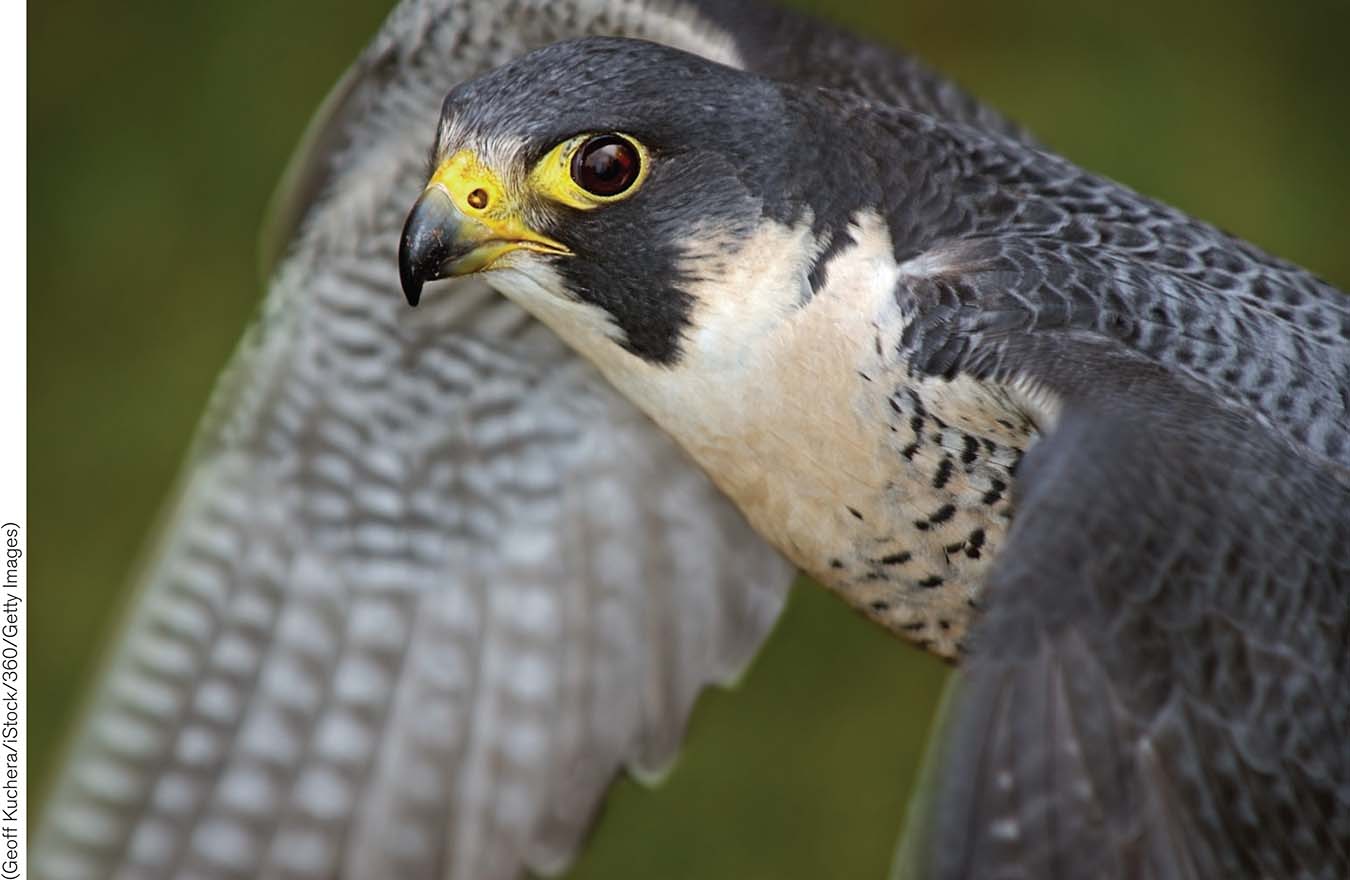3.9 Pest and predator control have pushed species to the brink of extinction
When Europeans arrived in North America, gray wolves (Canis lupus) and red wolves (Canis rufus) occupied most of the continent. However, wolf numbers were quickly depleted as state and federal agencies in the United States organized campaigns to exterminate wolves, which were seen as a threat to livestock and game animals. The systematic hunting and poisoning that followed were so effective that, by the early 20th century, nearly all wolves in the United States south of Canada and north of Mexico had been eliminated (Figure 3.24). The last wolf in Yellowstone National Park was killed in 1926. Today, the United States Department of Agriculture’s Wildlife Services continues to intentionally trap, shoot, and poison tens of thousands of animals every year, including predators ranging from gopher snakes to coyotes.

Predators aren’t the only animals that have been targeted for elimination by humans. Pest species such as rodents and insects, which threaten agriculture, and migratory birds, which can interfere with airplane traffic, are also targeted for killing; but their higher numbers and reproductive rates make extinction unlikely. Nevertheless, control aimed at “pest” species can have unintended impacts on other species, such as the peregrine falcon, Falco peregrinus.
biomagnification The process of certain chemicals becoming more concentrated in the tissues of animals with each transfer in a food chain.
Historically, the peregrine falcon was found across much of the Northern Hemisphere. The fastest of all birds, the peregrine can dive on prey at speeds of 320 kilometers per hour (200 miles per hour). From the 1940s to 1970s, the number of peregrine falcon nesting pairs in North America declined precipitously from an estimated historical number of approximately 3,875 to just 324 pairs. The decline was traced to DDE (dichlorodiphenyldichloroethylene), a highly persistent chemical produced during the breakdown of the insecticide DDT (dichlorodiphenyltrichloroethane), which caused their eggshells to thin and reduced reproductive success. DDT was ingested by plant-

Think About It
Why was DDT more of a threat to peregrine falcon populations than to the populations of the birds it fed on?
What factors should be considered in a cost–
benefit analysis of pest and predator control efforts?
3.6–3.9 Issues: Summary
Species are threatened by a variety of human activities. Habitat destruction and alteration are considered the most serious threat to species, affecting nearly 90% of endangered amphibians, mammals, and birds. Invasive species can harm native species through unchecked predation or competition. Their impact is particularly devastating on islands, where they have caused numerous species to go extinct. Illegal plant and wildlife trafficking for traditional medicine, the pet trade, hunting trophies, and bush meat causes significant harm to threatened species. Globalization and rising wealth in countries such as China have led to an increase in criminal gangs that focus on wildlife trafficking. Finally, predator control programs extirpated wolf populations, and pest control has caused collateral damage to nontarget populations. The 20th-